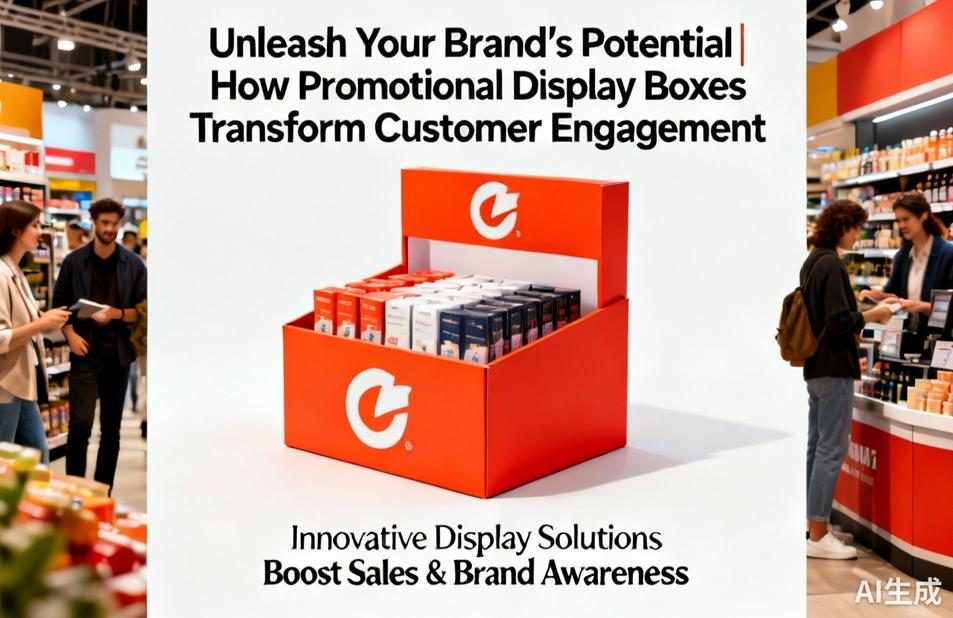
In today’s fiercely competitive marketplace, capturing consumer attention has become both an art and a science. While digital marketing dominates conversations, there’s an unsung hero quietly revolutionizing retail spaces worldwide: the promotional display box. These aren’t just containers; they’re strategic brand ambassadors that bridge the gap between products and consumers, creating memorable shopping experiences that drive conversions and build lasting brand loyalty.
The psychology behind effective promotional displays is fascinating. Studies show that strategically placed display boxes can increase product visibility by up to 300% compared to standard shelf placement. When customers encounter a well-designed promotional display, they’re not just seeing a product—they’re experiencing a brand story. The three-dimensional nature of display boxes allows for creative storytelling that flat packaging simply cannot achieve, making them powerful tools for launching new products or revitalizing existing ones.
Modern promotional display boxes have evolved far beyond simple cardboard structures. Today’s designs incorporate innovative materials, interactive elements, and sustainable solutions that align with contemporary consumer values. From corrugated cardboard that offers both durability and eco-friendliness to acrylic displays that provide premium visibility, the material choices reflect your brand’s personality and values. The integration of QR codes, augmented reality features, and even digital screens has transformed traditional display boxes into multi-sensory engagement platforms.
One of the most significant advantages of promotional display boxes is their versatility across industries. Cosmetic brands use countertop displays to showcase limited edition collections, while electronics companies employ floor-standing units to demonstrate product features. Food and beverage companies utilize point-of-purchase displays to drive impulse buys, and pharmaceutical companies rely on them for educational product information. This cross-industry applicability demonstrates how display boxes serve as universal solutions for brand communication challenges.
The return on investment from well-executed promotional displays is substantial. Beyond the immediate sales lift—which can range from 20-200% depending on the product and placement—display boxes provide long-term brand building benefits. They create consistent brand experiences across different retail environments, reinforce brand identity through repeated exposure, and generate valuable word-of-mouth marketing when designed to be visually striking or interactive.
Successful promotional display design follows several key principles. Visibility remains paramount—the display must catch attention within the critical three-to-five second window when consumers decide whether to engage. Accessibility comes next; products should be easy to examine and retrieve. Brand consistency ensures the display reinforces rather than conflicts with existing brand imagery. Finally, practicality considerations like assembly ease, transportation efficiency, and space requirements determine the display’s real-world viability.
Sustainability has become a non-negotiable aspect of modern display box design. Environmentally conscious consumers increasingly favor brands that demonstrate ecological responsibility. Fortunately, promotional displays have embraced this trend through recyclable materials, reduced packaging waste, and designs that encourage reuse. Many companies now create displays that retailers can repurpose as storage solutions or that consumers can transform into home organization items, extending the display’s lifecycle and environmental value.
The future of promotional display boxes looks increasingly intelligent and interactive. We’re seeing the integration of IoT sensors that track engagement metrics, LED lighting that adjusts to ambient store conditions, and even displays that connect to mobile apps for personalized customer experiences. These technological advancements are transforming passive displays into active participants in the retail environment, collecting valuable data while enhancing customer interactions.
Implementing an effective promotional display strategy requires careful planning and execution. Brands must consider their target audience, retail environment constraints, budget parameters, and campaign objectives. Working with experienced display manufacturers who understand both design principles and practical retail requirements can make the difference between a display that collects dust and one that drives measurable business results.
Ultimately, promotional display boxes represent one of the most effective tools in the modern marketer’s arsenal. They combine the tangible impact of physical presence with the storytelling power of strategic design, creating brand experiences that resonate long after the purchase decision. In an increasingly digital world, the physical connection facilitated by well-designed displays provides a competitive advantage that virtual marketing alone cannot replicate.




Leave a Message